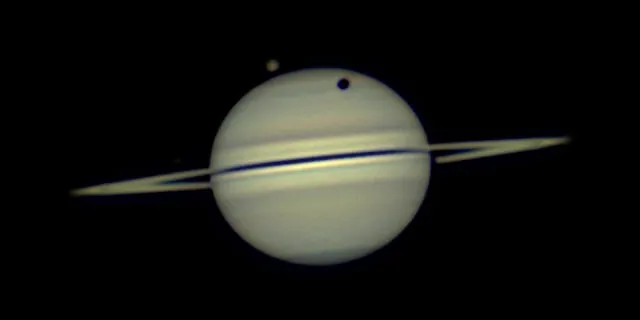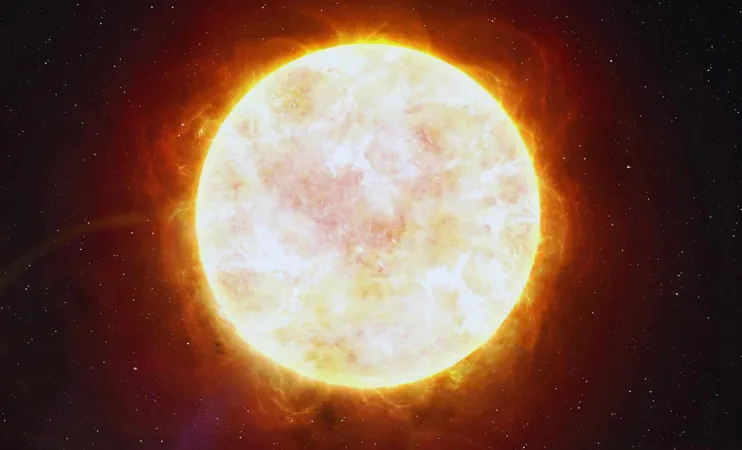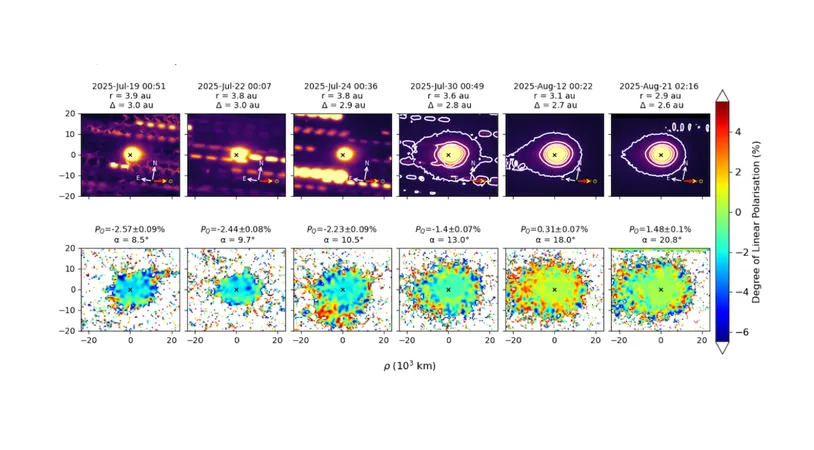
Witness Saturn's Spectacular 2025 Opposition: A Skywatcher's Dream!
2025-09-17
Author: Emma
Saturn's Dazzling Return to the Night Sky
This September, sky enthusiasts are in for a treat as Saturn makes a stunning appearance in the evening sky. With most planets retreating into the dawn hours, 2025 had been lacking celestial excitement after sunset. But hold on to your telescopes—the ringed giant is about to change that!
Mark Your Calendars: September 21 Is the Day!
On Sunday, September 21, Saturn reaches its opposition, coming within 8.5 Astronomical Units (about 1.3 billion kilometers) of Earth. This astronomical event happens just before the southward equinox on September 22, making it a fantastic moment to view Saturn rise brilliantly in the east, shining for all to see from sunset until sunrise.
A Special Year for Saturn's Rings
2025 is particularly thrilling because Saturn's iconic rings will be almost edge-on when viewed from Earth—a rare alignment that happens only once every 14 years. While the rings will appear narrow now, they’ll gradually widen over the coming years, reaching their fullest tilt of 27 degrees by 2032. If you miss this view, you'll have to wait until 2039 for another edge-on sight!
The Seeliger Effect: A Bright Surprise!
As Saturn approaches opposition, stargazers can expect a dazzling phenomenon known as the Seeliger effect. This occurs when the rings, lit fully by the Sun, shine brighter due to the absence of shadows from the particles that make them up. You won't want to miss this paradoxical brightness as it enhances the beauty of the rings!
Don’t Forget the Moons!
With a staggering 274 known moons, Saturn is a treasure trove for observers. While only about six are typically visible through even small telescopes, the most prominent is Titan, which orbits Saturn every 16 days and can create shadows on the planet itself during its ring plane crossings. Two exciting shadow events are coming up on September 20 and October 6, especially favorable for North American viewers!
A Cosmic Double Feature: Saturn and Neptune
Just two days after Saturn's opposition, Neptune, the bluish ice giant, will also reach its peak visibility on September 23. Not far from Saturn, it showcases a mere 2-inch disk, reminding us of the vastness of our solar system. Since its discovery in 1846, Neptune has completed just one orbit around the Sun!
Get Ready for a Celestial Show!
This weekend is your time to shine as Saturn graces our sky, heralding an exciting season of planetary observing. Grab your telescope, mark the significant dates, and immerse yourself in the wonders of the cosmos!









 Brasil (PT)
Brasil (PT)
 Canada (EN)
Canada (EN)
 Chile (ES)
Chile (ES)
 Česko (CS)
Česko (CS)
 대한민국 (KO)
대한민국 (KO)
 España (ES)
España (ES)
 France (FR)
France (FR)
 Hong Kong (EN)
Hong Kong (EN)
 Italia (IT)
Italia (IT)
 日本 (JA)
日本 (JA)
 Magyarország (HU)
Magyarország (HU)
 Norge (NO)
Norge (NO)
 Polska (PL)
Polska (PL)
 Schweiz (DE)
Schweiz (DE)
 Singapore (EN)
Singapore (EN)
 Sverige (SV)
Sverige (SV)
 Suomi (FI)
Suomi (FI)
 Türkiye (TR)
Türkiye (TR)
 الإمارات العربية المتحدة (AR)
الإمارات العربية المتحدة (AR)